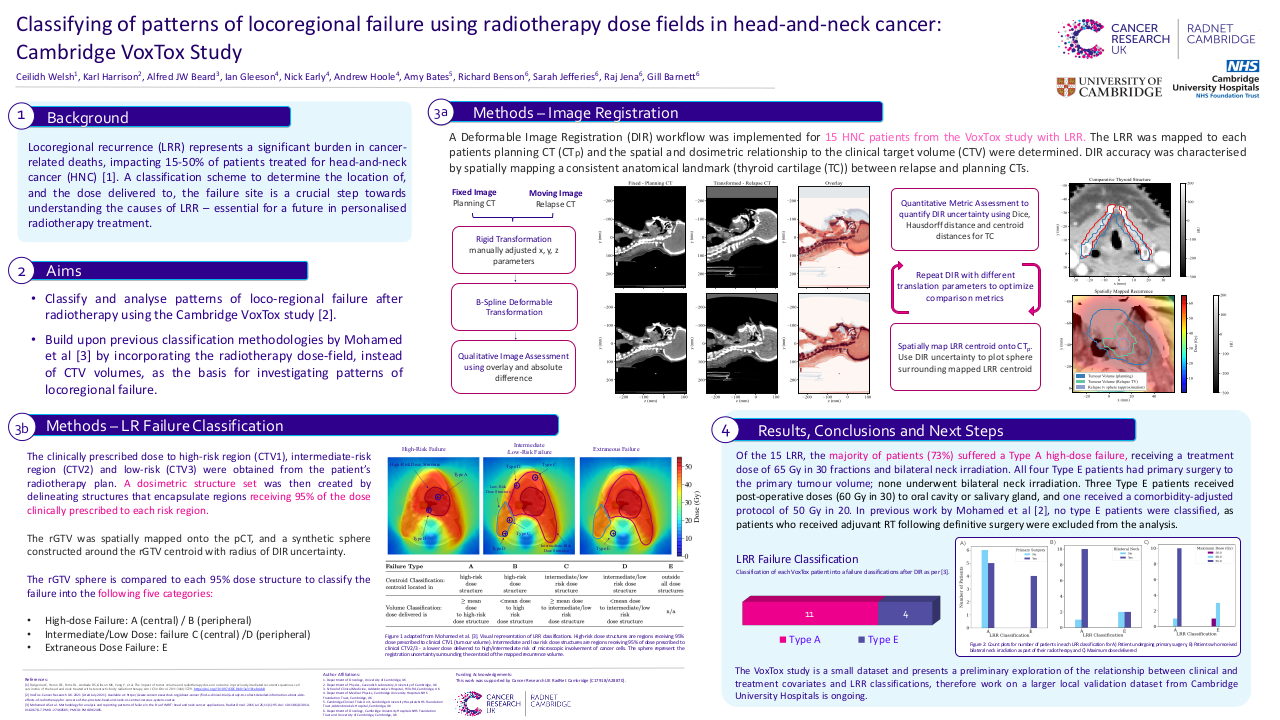Consistency and Prognostic Value of NI-RADS Scoring in Early Post-operative C.E. CT for Oral Cavity Cancer: Implication for Clinical Practice
Purpose/Objective
The Neck Imaging Reporting and Data System (NI-RADS) is a valuable tool for post-operative imaging evaluation in head and neck cancer patients. Yet, its specific utility in oral cavity cancer, especially in early post-operative contrast-enhanced computed tomography (C.E. CT), remains underexplored, despite potential therapeutic implications. This retrospective study aims to assess frequency of observations at both Primary and Regional levels, evaluate inter-reviewer concordance, and explore whether NI-RADS scores in early post-operative C.E. CT scans correlate with patient survival outcomes.
Material/Methods
This study involved a cohort of consecutive patients who had undergone surgical treatment for oral cavity squamous cell carcinoma (OSCC). Early post-operative contrast-enhanced computed tomography (CE-CT) scans, conducted within less than 90 days from surgery, were included for analysis. Two experienced radiologists (RC and MP) independently reviewed the CE-CT scans and assigned NI-RADS scores to different findings. NI-RADS scores ranged from 1 (indicating no suspicion of recurrence) to 3 (indicating a high suspicion of recurrence). The Kaplan-Meier survival analysis was employed to evaluate the correlation between NI-RADS scores and patient overall survival.
Results
In this study, 42 CE-CT scans were reviewed. One patient couldn't be evaluated for the primary tumor due to metal artifacts. NI-RADS scores at the primary site were: RC - 25 cases (NI-RADS 1), 9 cases (NI-RADS 2a), 5 cases (NI-RADS 2b), and 2 cases (NI-RADS 3); MP - 24 cases (NI-RADS 1), 7 cases (NI-RADS 2a), 5 cases (NI-RADS 2b), and 2 cases (NI-RADS 3).At the regional level: RC - 37 cases (NI-RADS 1), 2 cases (NI-RADS 2), 3 cases (NI-RADS 3); MP - 38 cases (NI-RADS 1), 1 case (NI-RADS 2), 3 cases (NI-RADS 3). The Cohen's kappa statistic indicated substantial inter-reviewer agreement for the primary tumor (kappa = 0.91, 95%CI 0.79-1.00) and regional lymph nodes (kappa = 0.92, 95%CI 0.77-1.00), confirming reliable NI-RADS score assignment.
Patients with a NI-RADS score of 3 at the primary tumor level had a shorter median OS of 7 months compared to those with NI-RADS scores of 1, 2a, and 2b, who had a median OS of 68 months. This difference was statistically significant with a p-value of 0.006.
Conclusion
The study demonstrates that NI-RADS scores in early post-operative contrast-enhanced computed tomography (CE-CT) scans can provide valuable insights into patient outcomes. Further research and validation of NI-RADS in OSCC management are warranted to solidify its clinical relevance. Additionally, exploring the utility of NI-RADS in larger patient populations can provide more robust evidence for its integration into clinical practice.






